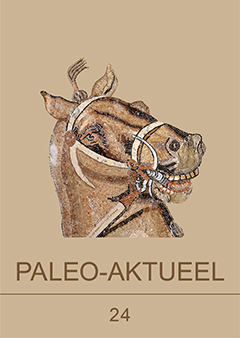Een bijzonder middenpaleolithisch werktuig van Ameland (Fr.)
Samenvatting
A bifacial tool of the Neanderthals from the beach of the Wadden Island of Ameland. A bifacial implement found on the North Sea beach of the Wadden Island of Ameland is likely to date to the Middle Palaeolithic because of the presence of variable gloss with small pits or wind gloss. Apart from gloss this tool shows ‘black patina’, formed while the object was underwater. This object may originally have been a hand axe, produced by a skilled flint knapper. It is possible that the tool became fragmented at some stage; it was then acquired by an apprentice flint knapper who used it as a practice piece and tried to shape it into a small hand axe or a leaf point. However, this attempt failed due to lack of skill, and as a result, the tool shows a unusual asymmetry: one side is worked very well into a regular working edge, and the opposite side is irregularly shaped because of inadequate knapping. The piece was probably transported to Ameland from the bottom of the North Sea about 13 km north of the island in the course of sand replenishment activities. This is the northernmost find of a Middle Palaeolithic tool from the Netherlands thusfar. Some other Middle Palaeolithic artefacts from the Wadden Islands of Vlieland and Texel are also briefly discussed. In our opinion, all of these finds date to a late phase of the Middle Palaeolithic, i.e. from the Eemian or the Weichselian; there are no indications of older finds.

